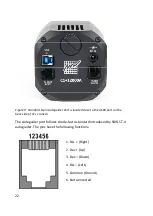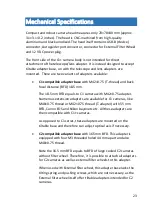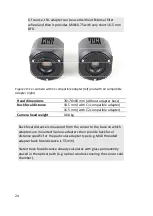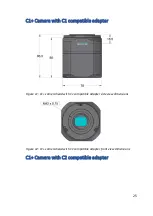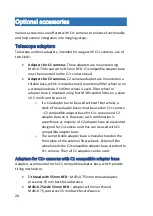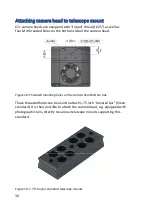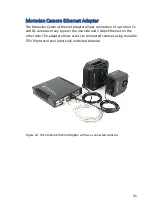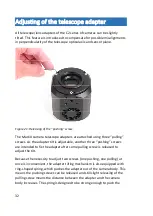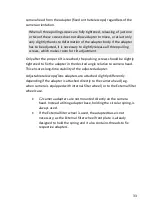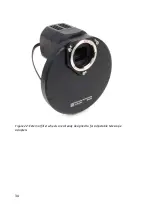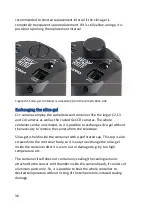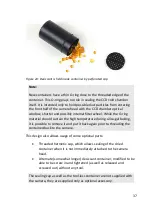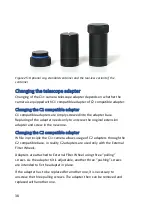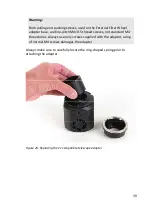
35
Camera Maintenance
The C2 camera is a precision optical and mechanical instrument, so it
should be handled with care. Camera should be protected from moisture
and dust. Always cover the telescope adapter when the camera is removed
from the telescope or put the whole camera into protective plastic bag.
Desiccant exchange
The C2 camera cooling is designed to be resistant to humidity inside the
CMOS sensor chamber. When the temperature decreases, the copper cold
finger crosses freezing point earlier than the sensor itself, so the water
vapor inside the sensor chamber freezes on the cold finger surface first.
Although this mechanism works very reliably in majority of cases, it has
some limitations, especially when the humidity level inside the sensor
chamber is high or the chip is cooled to very low temperatures.
This is why a cylindrical container, filled with silica-gel desiccant, is placed
inside the camera head. This cylindrical chamber is connected with the
insulated cooled sensor chamber itself.
Warning:
High level of moisture inside the sensor cold chamber can cause
camera malfunction or even damage to the CMOS sensor. Even if the
frost does not create on the detector when the sensor is cooled below
freezing point, the moisture can be still present. It is necessary to keep
the sensor chamber interior dry by the regular exchange of the silica-
gel desiccant. The frequency of necessary silica-gel exchanges depends
on the camera usage. If the camera is used regularly, it is necessary to
dry the sensor chamber every few months.
It is possible dry the wet silica-gel by baking it in the oven (not the
microwave one!) to dry it again. Dry the silica-gel for at last one or two
hours at temperature between 120 and 140 °C.
The silica-gel used in C2 cameras changes its color according to amount of
absorbed water – it is bright yellow or orange when it is dry and turns to
transparent without any color hue when it becomes wet. It is


